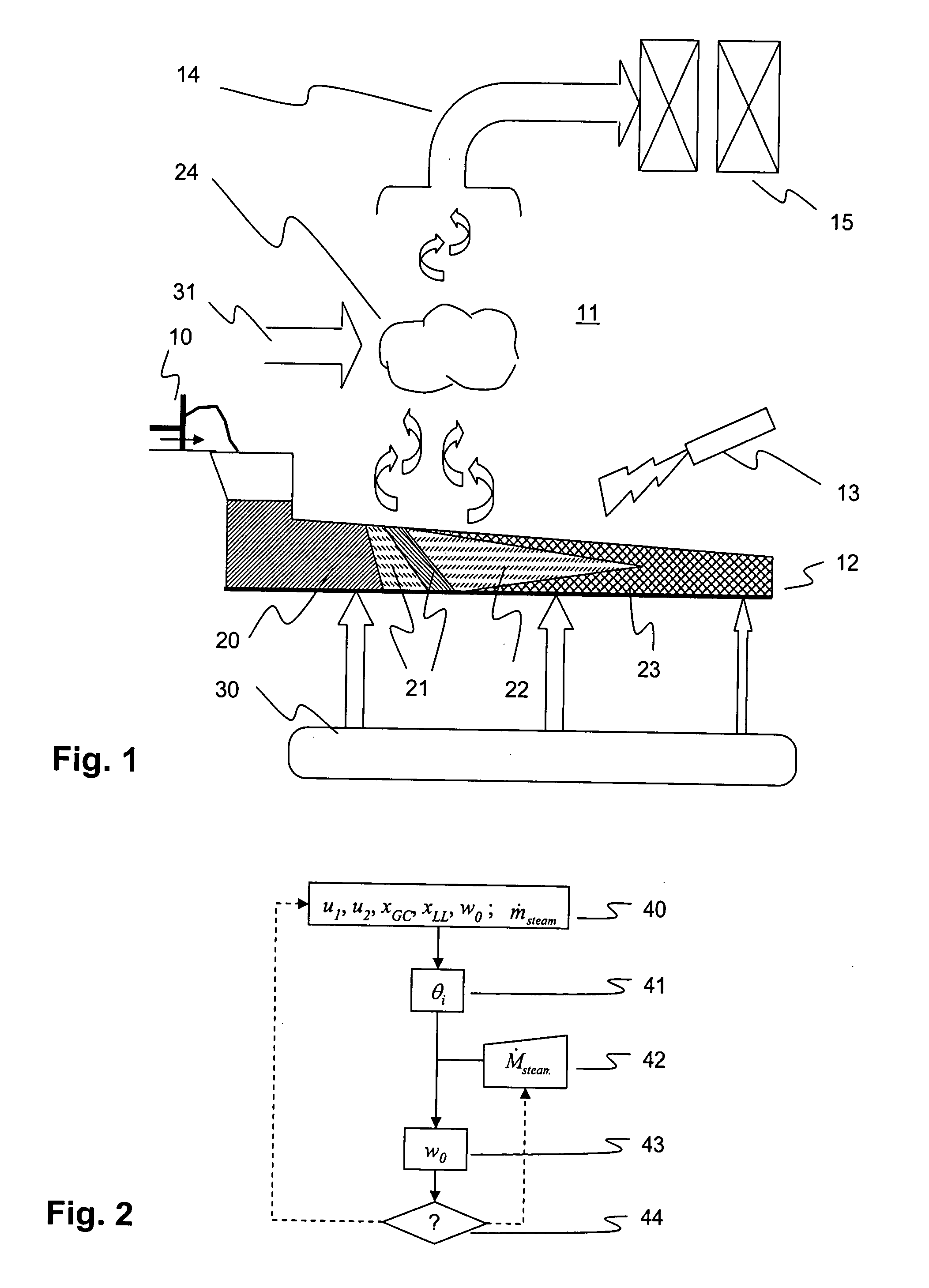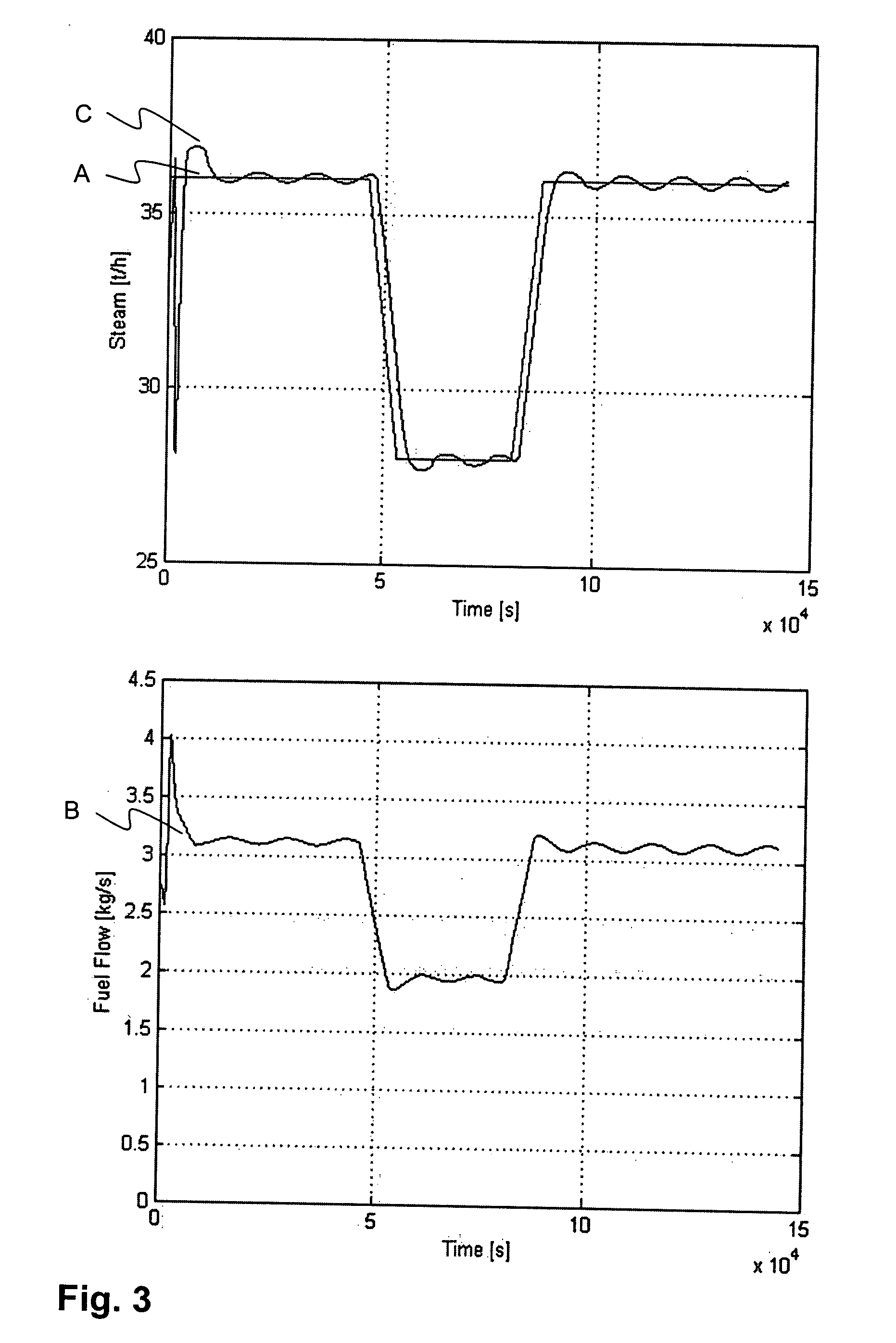Controlling a waste combustion process
a technology of waste combustion and control scheme, which is applied in the direction of combustion types, lighting and heating apparatus, instruments, etc., can solve the problems of increasing the complexity of the plant, no adequate overall control scheme available so far to supplant an experienced operator, and fluctuation in combustion temperature and flue gas composition and flow
- Summary
- Abstract
- Description
- Claims
- Application Information
AI Technical Summary
Benefits of technology
Problems solved by technology
Method used
Image
Examples
Embodiment Construction
[0007]It is an objective of the invention to enable an automated, real-time control of a waste incineration plant treating waste of variable composition, in view of maintaining a desired steam set point or steam output level. This objective is achieved by a method of and a system for controlling a waste combustion process according to the claims 1 and 6. Further preferred embodiments are evident from the dependent patent claims.
[0008]According to the invention, the steam production in a waste combustion process is controlled by determining waste feed rate control values from a relation approximating the steam flow as a sum of independent steam contributions depending on operational parameters that are accessible in real-time. The operational parameters include process inputs such as mass flows of primary and secondary combustion air, as well as process states such as waste and flame temperatures. The independent steam contributions are inspired by the real physical part-processes an...
PUM
 Login to View More
Login to View More Abstract
Description
Claims
Application Information
 Login to View More
Login to View More - R&D
- Intellectual Property
- Life Sciences
- Materials
- Tech Scout
- Unparalleled Data Quality
- Higher Quality Content
- 60% Fewer Hallucinations
Browse by: Latest US Patents, China's latest patents, Technical Efficacy Thesaurus, Application Domain, Technology Topic, Popular Technical Reports.
© 2025 PatSnap. All rights reserved.Legal|Privacy policy|Modern Slavery Act Transparency Statement|Sitemap|About US| Contact US: help@patsnap.com



